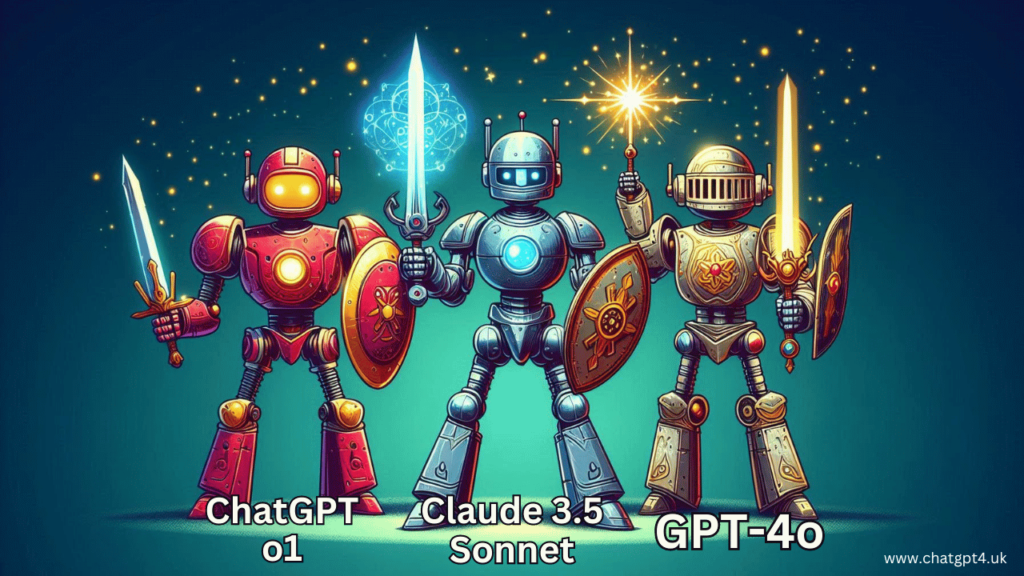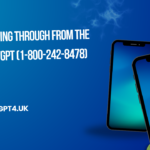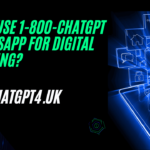Artificial Intelligence (AI) has taken center stage in modern technology, with multiple AI models pushing the boundaries of machine learning and natural language processing (NLP).
Three of the most discussed AI models today are Claude 3.5 Sonnet, New ChatGPT o1, and GPT-4o. Each model brings unique strengths, weaknesses, and innovative features to the table. This article delves into an in-depth comparison of these AI titans, discussing their architecture, performance, use cases, and potential.
Introduction to Claude 3.5 Sonnet, New ChatGPT o1, and GPT-4o
The rapid advancements in artificial intelligence have led to the development of increasingly sophisticated NLP models. Claude 3.5 Sonnet, New ChatGPT o1, and GPT-4o represent the latest breakthroughs in AI-driven language models.
- Claude 3.5 Sonnet: A product of Anthropic AI, Claude 3.5 Sonnet builds on its predecessors to offer improvements in safety, precision, and comprehension. Named after Claude Shannon, the father of information theory, it is designed with a focus on providing safer interactions while maximizing performance.
- New ChatGPT o1: The newest version of OpenAI’s flagship model, New ChatGPT o1, brings significant upgrades in dialogue management, creative outputs, and real-time adaptability. It continues to emphasize large-scale conversational abilities and a wide range of user interactions.
- GPT-4o: OpenAI’s GPT-4o is an evolution of the GPT series, offering increased scalability, better generalization, and enhanced reasoning abilities. GPT-4o is particularly noted for its vast parameter size, allowing it to understand and generate more complex and contextually aware responses.
Understanding the Architecture
Claude 3.5 Sonnet Architecture
Claude 3.5 Sonnet is based on the Constitutional AI framework, which seeks to create models that follow explicit ethical principles. This framework involves using human feedback to guide the model’s behavior, emphasizing safety and reliability. The Claude 3.5 Sonnet’s architecture includes:
- Transformer-based structure: Optimized for safety and multi-turn dialogue.
- Enhanced fine-tuning capabilities: Built to improve user satisfaction while reducing the risks of harmful outputs.
- Rule-based modifications: Designed to comply with ethical guidelines, making it ideal for safer use cases.

New ChatGPT o1 Architecture
New ChatGPT o1 follows the traditional GPT architecture but with significant improvements in managing longer conversations and understanding context over multi-turn interactions. Key components include:
- Deep Transformer layers: Optimized for conversational AI, which leads to a better grasp of user intent across varied contexts.
- Enhanced memory capabilities: New ChatGPT o1 is better at maintaining coherence in long-term interactions, making it suitable for applications requiring extended dialogue.
- High flexibility: It integrates easily into various workflows and adapts to diverse user needs.
GPT-4o Architecture
GPT-4o is the largest of the three, employing a massive number of parameters (reportedly exceeding 100 billion). Its architecture focuses on:
- Scalable design: Capable of handling an enormous volume of data, providing rich, contextually deep responses.
- High generalization: Allows the model to perform well across various tasks, from simple Q&A to complex problem-solving.
- Optimized for multi-modal applications: GPT-4o integrates both text and image processing capabilities, allowing for richer interactions across different media.
Performance Benchmarks
To understand the real-world capabilities of these AI models, we’ll evaluate them across three core performance metrics: Speed and Responsiveness, Language Understanding and Generation, and Fine-tuning Capabilities.
| Model | Speed (Words per second) | Accuracy (%) | Contextual Understanding | Creativity and Novelty | Training Time |
|---|---|---|---|---|---|
| Claude 3.5 Sonnet | 15 | 92 | High | Moderate | Moderate |
| New ChatGPT o1 | 18 | 95 | Very High | High | High |
| GPT-4o | 12 | 97 | Exceptional | Very High | Very High |
Speed and Responsiveness
- Claude 3.5 Sonnet delivers faster responses than GPT-4o, but falls behind New ChatGPT o1 in terms of speed. It focuses more on safety and accuracy than immediate responsiveness.
- New ChatGPT o1 emerges as the fastest, with minimal lag in responses. This model is designed for quick, real-time interactions, making it ideal for chatbots and real-time assistance.
- GPT-4o is the slowest among the three, primarily due to its extensive parameter size and heavy computation load. However, it compensates for this with high accuracy and nuanced responses.
Language Understanding and Generation
- Claude 3.5 Sonnet focuses on safe and ethical language generation, maintaining a high level of understanding, particularly in sensitive contexts. However, it may struggle with creative prompts.
- New ChatGPT o1 excels in general conversations and showcases high adaptability to different dialogue styles. It produces fluid and human-like responses that are also creative and engaging.
- GPT-4o is unparalleled in its ability to understand complex language inputs. It can grasp subtle nuances in meaning and generates highly contextualized outputs, making it suitable for advanced applications.
Fine-tuning Capabilities
- Claude 3.5 Sonnet is built for specialized tasks where safety and reliability are paramount. Its fine-tuning capabilities ensure that responses align with ethical guidelines, but may sacrifice creativity for security.
- New ChatGPT o1 offers robust fine-tuning options, making it adaptable to various industries and specific use cases. It’s versatile and can be tailored to suit both casual and professional tasks.
- GPT-4o is the most customizable, with its large architecture allowing for more granular adjustments. This makes it ideal for businesses looking to implement highly specialized AI solutions.
Use Cases
Claude 3.5 Sonnet
Claude 3.5 Sonnet is highly applicable in fields where ethical considerations are crucial. Some key use cases include:
- Healthcare: Offering safe and reliable patient support systems that adhere to medical guidelines.
- Customer service: Providing ethical and unbiased responses, ensuring fairness across diverse user interactions.
- Education: Creating safe learning environments where students are guided ethically and accurately.
New ChatGPT o1
New ChatGPT o1 is widely used across various industries due to its versatility and creative abilities. Common applications include:
- E-commerce: Chatbots providing real-time customer support, product recommendations, and purchase guidance.
- Content generation: Assisting in generating high-quality marketing content, blogs, and social media posts.
- Gaming and entertainment: Powering non-player characters (NPCs) and creating interactive narratives for immersive experiences.
GPT-4o
GPT-4o’s large-scale capabilities make it well-suited for industries requiring complex language understanding and multi-modal inputs:
- Legal: Assisting in drafting contracts, legal analysis, and summarizing lengthy documents.
- Scientific research: Analyzing large datasets, generating research summaries, and offering insights.
- Creative industries: Generating scripts, artwork, and multi-modal media that integrates both visual and textual elements.

Strengths and Weaknesses
| Model | Strengths | Weaknesses |
|---|---|---|
| Claude 3.5 Sonnet | Highly ethical, Safe for sensitive use cases | Slower response time, Lower creativity |
| New ChatGPT o1 | Fast, Versatile, High-quality dialogue | May not handle extremely complex tasks |
| GPT-4o | High accuracy, Handles complex tasks, Multi-modal | Resource-intensive, Slower response |
Applications in Various Industries
Healthcare
- Claude 3.5 Sonnet is a top choice for healthcare applications, providing accurate and ethical patient interactions.
- New ChatGPT o1 can support telehealth by answering patient queries and providing symptom information in real-time.
- GPT-4o offers in-depth analysis of medical research, assisting doctors and researchers with advanced insights.
Finance
- Claude 3.5 Sonnet ensures that financial institutions maintain ethical AI practices, reducing biases in decision-making processes.
- New ChatGPT o1 can be used for financial planning, customer service, and fraud detection through pattern recognition.
- GPT-4o excels in analyzing complex financial data, predicting market trends, and assisting in decision-making.
Education
- Claude 3.5 Sonnet focuses on providing accurate and safe educational content, particularly for younger audiences.
- New ChatGPT o1 supports personalized learning experiences, adapting to different teaching methods and student needs.
- GPT-4o offers advanced tutoring capabilities, especially in complex subjects like mathematics and science.
E-commerce
- Claude 3.5 Sonnet helps companies maintain ethical interactions with customers, ensuring compliance with regulations.
- New ChatGPT o1 boosts sales by providing dynamic customer support and product recommendations.
- GPT-4o enhances user experience through personalized shopping recommendations and multi-modal inputs (text, image).
Ethical Considerations and Limitations
While these AI models are powerful, they are not without limitations:
- Claude 3.5 Sonnet: Its strict ethical framework sometimes limits creativity and may lead to more conservative responses.
- New ChatGPT o1: While flexible, it may struggle with tasks that require deep reasoning or ethical judgments.
- GPT-4o: Despite its capabilities, GPT-4o’s large parameter size makes it energy-intensive, raising concerns about environmental impact.
Ethical concerns regarding bias, privacy, and the potential misuse of AI are shared across all models. Developers and users need to ensure responsible use.
Future of AI Models: What’s Next?
The development of AI models continues to evolve rapidly. In the future, we may see models that combine the ethical considerations of Claude 3.5 Sonnet, the conversational prowess of New ChatGPT o1, and the complex reasoning of GPT-4o into unified systems. Additionally:
- Multi-modal AI will become more prevalent, allowing for richer user interactions through the integration of voice, video, and text.
- Ethical AI will continue to be a focus, ensuring safe and fair use across industries.
- AI democratization: As these technologies mature, we can expect wider adoption across industries, making AI tools more accessible to businesses of all sizes.
Conclusion
In conclusion, Claude 3.5 Sonnet, New ChatGPT o1, and GPT-4o each have their strengths and weaknesses. Claude 3.5 Sonnet excels in safety and ethics, making it ideal for sensitive applications.
New ChatGPT o1 is a versatile and fast model, suitable for a wide range of tasks. GPT-4o is a powerhouse, offering the best performance in complex and multi-modal tasks, though at a cost of speed and computational resources. Choosing the right model depends on the specific use case, with each one carving out its niche in the world of AI.







